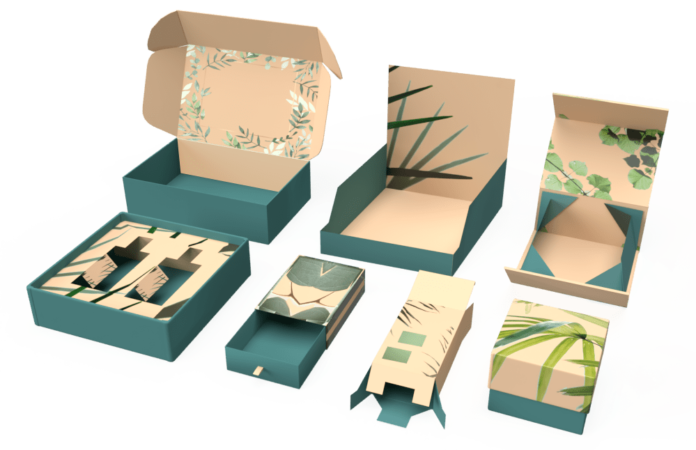Cardboard boxes are industrially prefabricated boxes that are used to package goods. They are often recyclable. Cardboard is a generic term that is seldom used by industry specialists. ECT board is one of the most common types of ECT board. Here is an overview of how this material is used. If you are looking for a way to reuse or recycle your boxes, try ECT board. This product is a great alternative to plastic boxes.
Corrugated cardboard
Whether you’re shipping a large or small package, corrugated cardboard boxes are an economical way to pack and ship your goods. Their versatility is unmatched and you can find them in endless sizes and styles. They stack neatly on a single pallet and reduce fuel and carbon dioxide emissions. They can also be used for storing and transporting delicate items. If you’re shipping fragile or long items, consider using a cylindrical box.
Paperboard
The multilayered construction of paperboards provides distinct performance advantages and gives manufacturers flexibility in choosing the type of fibre used for the material. Paperboards are made from virgin fibre derived from wood through a process called pulping. The chemical and mechanical processes break down non-cellulose components of wood, producing a material that is both strong and moisture-resistant. The result is a material that is ideal for beverage containers, heavy-duty packaging, and other uses.
Center Special Slotted Container
A Center Special Slotted Container is a unique type of cardboard box with inner and outer flaps cut at different lengths that meet in the middle. This type of box is very sturdy due to the double thickness of the corrugated board. The inner flaps meet at the center of the box, making the product appear level. This type of box is also popular for packaging delicate products, such as jewelry, and does not tear easily.
ECT board
Corrugated cardboard boxes are industry standard for shipping and storing items. They are available with Kraft or White outer liners. Their strength is measured with the Edge Crush Test (ECT) and Mullen Burst Test (MBT). Boxes with a higher ECT value are stronger. A box that is more durable is a good choice for shipping and storing items. They are recyclable. ECT board cardboard boxes are ideal for packaging fragile products.
CSSC
The basic components of a CSSC cardboard box are its length, width, and depth. These are the inside dimensions, which determine the box’s fit around the product. Outside dimensions, meanwhile, determine the carrier classification and pallet pattern. The box’s strength is measured in edge crush resistance. It must be certified to meet minimum limits. It is often used for packaging food products and other fragile items. The CSSC is made of sturdy corrugated board with three layers of flat linerboard facing.
SFF
SFF (Special Freight Format) cardboard boxes are sturdy, corrugated shipping boxes. They are made from a B flute corrugated paperboard with flaps that overlap the full width of the box. The boxes’ white exterior is complemented by black text. They are ideal for sending a wide range of goods from electronics to furniture. The four-pack contains inner and outer boxes and foam corners for protecting fragile items.
Sizes
Cardboard boxes come in different sizes for various products. These versatile boxes can be cut to fit the items you’re packaging. The rectangle shape suits stackable products, while the rectangular size accommodates other shapes as well. Many types of products fit perfectly in the rectangular shape of a cardboard box. Common items packaged in cardboard boxes include shoes, toys, and more. Below are some examples of the sizes of cardboard boxes. When choosing the right box size, it’s important to consider how much space it will take.
Origins
The origins of cardboard boxes and packaging can be traced back as far as the Chinese Empire, where they used treated Mulberry bark sheets to wrap gifts. Around the 15th century, China invented durable paper. By the early nineteenth century, this ridged paper had become strong enough to safely house objects. Production of cardboard packaging then spread to Italy and the Middle East. In 1817, cardboard boxes began to be mass-produced. The first cardboard boxes, however, were not folding ones.
Die-cutting
Customized die-cut packaging can help you to maximize the aesthetic impact of your products. Custom cardboard boxes can be designed and produced quickly and easily. Professionals with die-cutting equipment can help you to achieve the design goals you have. The end result will be a high-quality box that offers consistent branding for your products. It can also be made out of a variety of materials, including wood, corrugated cardboard, and paperboard.
Stacking
Stacking cardboard boxes can be an efficient way to store items. Unlike plastic containers, which can easily be knocked over, cardboard boxes can be stacked in an interlocking fashion. This allows you to save storage space and prevents the cartons from collapsing. To make the process even simpler, some manufacturers have provided their containers with grooves for stacking. To avoid accidental cave-ins, stack boxes in the proper pattern.

